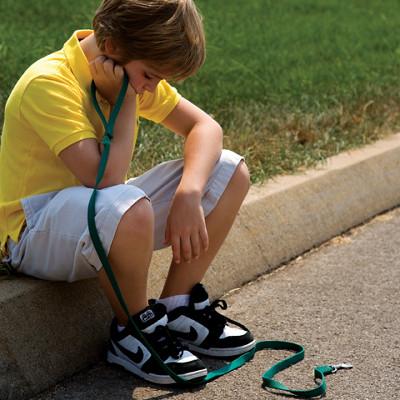People become separated from pets during disasters in any number of ways. Wind, rain, fire and flood disrupt landmarks, both visual and scented, and can confuse savvy pets from finding their way home. To be reunited with your missing pets, follow these tips. I pray only one tip will find your missing fur-kids, but don't stop there until all avenues are exhausted. Your pets want to come home just as much as you want to find them.
Shop Shelters

Found pets typically end up in local shelters, especially following a disaster. There may also be "temporary" shelters set up when massive displacement occurs. Don't just call; visit in person. Volunteers may not recognize her if your white Poodle is so filthy she looks like a Puli. Shelter staff typically are very savvy but during a disaster, less experienced volunteers might not know what a Puli is, so be sure to eyeball all the dogs of a size/weight range. Take a picture with you, and perhaps a favorite toy, so that your traumatized pet recognizes not only you but a familiar object. Check several times, not just once.
Check Local Vets

When injured pets are found, the rescuer may take the cat or dog for veterinary care. Many clinics also post pictures and lists of both lost and found pets. Pets that wear collars with a rabies tag can be tracked to the clinic that administered the shot via the serial number on the tag--records are required by law. People can call the clinic, where they look up the serial number to identify the pet and his owner.
Create an Identity Kit

There are many ways to identify your dog or cat, with microchips being the gold standard. Up to seventy percent of animals that arrive at shelters have no identification, yet this is the best insurance you have of a happy reunion.
A metal or plastic tag with your contact information attached to the dog or cat's collar offers the simplest method of identification. When you visit area shelters or clinics, take pictures of your pet with you. You have bunches on your cell phone, right? Include close ups of the face, any odd identifying marks, perhaps a heart-shaped spot of fur or a missing toe. Note that your cat has one "crinkled" ear, or meows with a weird sound and likes playing fetch.
Include very specific behaviors, as well as age, size, breed and appearance. Does your cat or dog always respond to a particular word or command? Include that in your kit. Offer specifics: wavy blonde color fur, one ear up and one down, 65 pound spayed female, docked tail -- answers to "Dolly" and sits up and begs when you say "treat time."
Canvas the Neighbors

In cases of evacuation, your neighbors may be in the same boat, but in other cases, your pets may have taken refuge next door. Pet lovers often take in a friendly stray and watch for "lost" ads in the newspaper before taking them to the shelter. Go door to door, and ask permission to check outbuildings, under porches where frightened dogs or cats might hide or become trapped in an infrequently used garage. Lost cats almost always stay close to home and may be found under nearby bushes, sheds, or trees and be too frightened to respond to your calls. Cats may be found inside the tornado-damaged home, hiding in the walls or closet for instance.
Advertise

Make posters or fliers to leave with neighbors, shelters and vet clinics that includes several photos documenting a close up of the face, full body shots from both sides and the back, and any distinguishing marks. Include the specifics that make your pet unique. Check with local newspapers about posting "lost pet" notices--often they do this for free. Use social media and engage the power of your online friends to share your pet identity kit. Facebook and other platforms have "lost pet boards" designed to help reunite owners and pets after disasters.
Use Your Phone

The ASPCA released a free interactive mobile app for pet owners to track down lost pets. This can be set up prior to your pet going missing or used during the crises and can be tailored to your specific circumstances and each pet's individual personality. That can help you know how and where to search if they go missing, build a digital share-able lost pet flyer that can be instantly posted online. The app includes advice for pet safety before, during and after a major storm or natural disaster.
There He Is!! Now What?

Cats and dogs in terror mode can't think clearly. When the fight-or-flight impulse kicks in, even dogs that otherwise know their way home panic and run for miles, while cats tend to hide nearby and refuse to come out when you call.
Often owners hear of lost pet sightings, but by the time they arrive, the dog or cat has run away, still panicked. These pets may not recognize you or want to come when so fearful, especially if well-meaning strangers have already tried to chase and catch them.
- Try setting out food and water in likely places to lure them out, perhaps with a carrier that smells like them.
- For dogs, don't approach directly or call to them if they're on the run outside. Find another way to engage, since direct eye contact can be scary--remember, he's not thinking! Bring a favorite toy like a ball or Frisbee, and play the game with another person for a time to engage the dog's attention.
- For some dogs, just getting down on the ground in a non-threatening pose may work. Lie down on your back, and often the dog will come closer to investigate.
- If your dog or cat has a beloved pet friend still in your possession, you may be able to lure the AWOL pet home by presenting the furry friend on a secure long leash.





